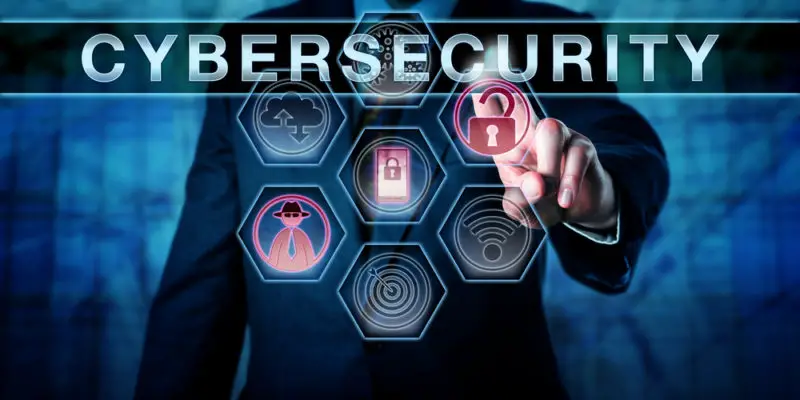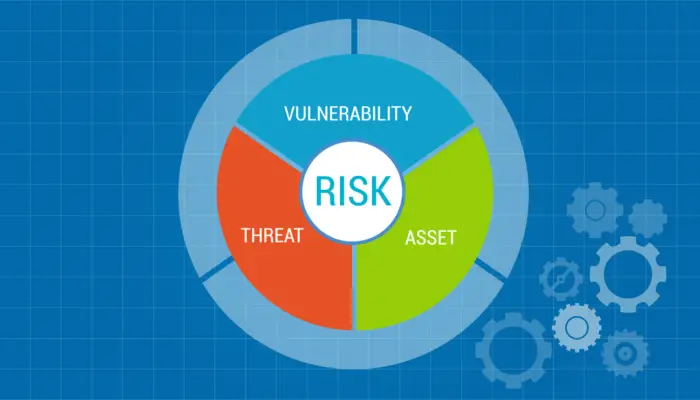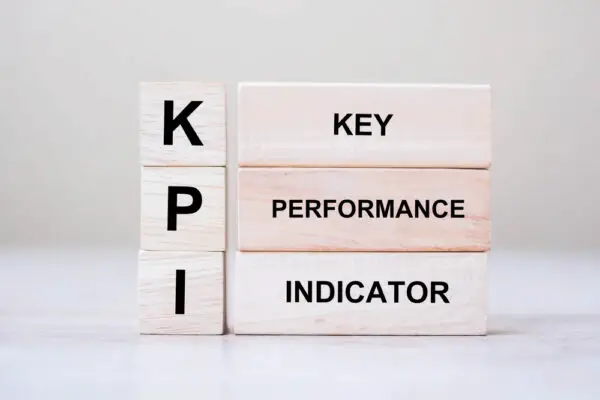These 10 cybersecurity KPIs will help improve your cybersecurity dashboard metrics. Calculate Mean Time To Detect (MTTD) and Mean Time To Respond (MTTR) for incident productivity. Monitor incident response ratios and time to resolve incidents.
Determine risk assessment and score cybersecurity compliance industry standards. Report on employee training rates and encourage awareness.
Automate and streamline incident response, threat detection, and security optimization efficiency. Provide executive overview insights to help leadership make strategic business decisions.

Leverage live threat intelligence and advanced security metrics such as Vulnerability Detection Rate and Security Incident Severity. These KPIs will give you a comprehensive perspective of your cybersecurity health for effective monitoring and fine-tuning.
What You Will Learn
- Metrics such as MTTD and MTTR should be included in measuring incident response efficiency.
- The incident response rate and time needed to resolve incidents should be measured.
- Vulnerability detection and remediation rates should be tracked to ensure better security.
- Security incident frequency and severity should be measured to calculate risk.
- Employee training rates should be assessed to boost cybersecurity awareness.
Define Cyber Risk And How It Will Affect Your Organization’s Security Posture
Understanding cyber risk is essential for appreciating what may or can affect an organization’s security posture.
By identifying what can or may occur and predicting vulnerabilities through risk assessment, organizations can take a more proactive approach to improving their overall security posture by fine-tuning their cybersecurity operations.
Define Cyber Risk And How It Will Affect Your Organization
Defining cyber risk and understanding its effects is crucial in securing an organization’s security posture against potential cyber-attacks. Cyber risk is the probability that a security incident will happen and the impact that it will have on an organization’s security posture if it does happen.
Effective cyber risk management should be implemented to safeguard sensitive corporate data from compromise, reduce the probability of data breaches, and protect the organization’s security infrastructure.
A mature cybersecurity program should also be in place to help strengthen the organization’s ability to resist cyber threats and attacks, which can negatively affect business goals and objectives.
Recognized industry standards such as the NIST Cybersecurity Framework can be utilized when developing, managing, and implementing information security programs.
Develop a Comprehensive Security Dashboard
A comprehensive security dashboard is a useful and powerful tool that organizations can utilize to monitor and track the status of their most important cybersecurity metrics and Key Performance Indicators (KPIs) in real-time.
Security dashboards visualize stored data and provide valuable security insights, helping leadership make informed, timely business decisions that are aligned with business goals and objectives.
They can also help improve the organization’s security posture by enabling organizations to react effectively to security threats and vulnerabilities.
Why a Security Dashboard is Important in Improving Security Posture
Improving the organization’s security posture is critical by effectively monitoring and tracking cybersecurity initiatives via a comprehensive security dashboard.
A security dashboard allows the security team to monitor the organization’s security posture in a centralized hub from a proactive perspective, which can aid in tracking security metrics, prioritizing remediation actions and identifying vulnerabilities and weaknesses that may exist within the enterprise.
A comprehensive dashboard can help make informed decisions regarding risk mitigation and improvements to the organisation’s overall security strategy. It can also aid in streamlining remediation efforts, optimizing resource distribution, and increasing the ability to respond to security incidents promptly.
A comprehensive security dashboard can help strengthen the organization’s ability to resist cyber threats and attacks that can negatively affect business goals and objectives.
Data Visualization and Quick Insights for Effective Decision Making
Data visualization is key to helping derive insights and make effective decisions within the security dashboard building domain.
Colour coding and a user-friendly design can help transform cybersecurity metrics into visually appealing static and dynamic graphs that provide quick insights and context into an organization’s risk mitigation capabilities.
These graphs can also improve the overall user experience, which can aid in allocating resources to remediate vulnerabilities and weaknesses effectively and eliminate potential threats and attacks against the enterprise.
The table below shows the importance of data visualization in cybersecurity dashboard metrics:
Data VisualizationImportanceColor CodingQuick Information InterpretationUser ExperienceEnhanced Decision-MakingResource AllocationEfficient Risk Mitigation.
#2: Vulnerability Detection Rate and Remediation Rate
Mean Time to Detect (MTTD) and Mean Time to Respond (MTTR) are cybersecurity metrics and KPIs that provide valuable insights into an organization’s threat detection and incident response capabilities.
Low MTTD and MTTR values mean that an organization effectively responds to security incidents, allowing it to neutralize cyber threats quickly after detection.
These KPIs should be tracked on a cybersecurity dashboard to help businesses measure the productivity of their security operations and identify areas that may need improvement.
MTTD measures the time it takes for security incidents to be detected within a given period of time.
On the other hand, MTTR refers to the amount of time it takes for incident response actions to be executed and recovered from a security incident.
Businesses must understand and actively seek to reduce MTTD and MTTR values by building a strong and resilient cybersecurity posture that can effectively withstand and counter evolving cyber threats and attacks.
2: Vulnerability Detection Rate and Remediation Percentage
Another key metric to track and monitor in a cybersecurity dashboard is the vulnerability detection rate and remediation percentage.
The vulnerability detection rate informs how well or poorly vulnerabilities are being identified and detected within the enterprise. On the other hand, the remediation percentage shows how effectively or inefficiently vulnerabilities are being resolved and patched after detection.
The table below shows the importance of tracking vulnerability detection rate and remediation percentage in a cybersecurity dashboard:
3: Cyber Risk Score and Benchmarking Against Industry
A cybersecurity risk score is a metric used to evaluate an organization’s cybersecurity risk posture against industry peers and competitors.
Businesses can benchmark key cybersecurity metrics against competitors and industry leaders to derive valuable insights into their overall security risk posture.

Enhancing Security Posture and Aligning with Industry Standards
Through cybersecurity benchmarking, organizations can position themselves to comprehend their standing in the realm of cybersecurity risk compared to industry counterparts, thereby identifying domains of strength and areas requiring enhancement to achieve an optimal security risk posture.
Gap analysis serves as a crucial assessment in cybersecurity benchmarking, aiding in identifying discrepancies between current practices and best industry standards.
Addressing these gaps can significantly bolster an organization’s cybersecurity stance.
#4: Gap Analysis and Compliance with Industry Standards
An important part of measuring and benchmarking cyber risk within an organization is carrying out a gap analysis and complying with industry standards.
A gap analysis can help identify weaknesses and missing links within the organization’s security program.
Compliance with industry standards such as the NIST Cybersecurity Framework and other recognized industry standards and alliances provides valuable insights into what controls an organization’s security program effectiveness.
This metric can also be used as a benchmark to measure the organization’s overall cybersecurity effectiveness against industry standards and competitors.
By performing a gap analysis and complying with industry standards, organizations can better understand their overall security posture, identify areas that need improvement, and build a strong and resilient cybersecurity strategy that can effectively withstand cyber attacks and incidents.
## Summary
In conclusion, leveraging a cybersecurity dashboard to monitor and analyze key metrics and KPIs offers invaluable insights into an organization’s cybersecurity risk posture and overall efficiency. These metrics and KPIs provide a detailed understanding of the organization’s threat detection, vulnerability management, incident response capabilities, and overall operational effectiveness.
By actively tracking and interpreting these metrics and KPIs, organizations can significantly boost their cybersecurity management efforts, pinpoint weaknesses within their cybersecurity framework, and enact substantial and measurable enhancements to maintain a resilient and effective cybersecurity strategy.
Conclusion
Finally, monitoring and analyzing cybersecurity metrics and KPIs on a cybersecurity dashboard provides valuable insights into the organization’s cybersecurity risk posture and overall operational effectiveness.
Active tracking and measurement of these cybersecurity metrics and KPIs can help improve an organization’s cybersecurity management efforts, identify weaknesses within the cybersecurity strategy, and implement tangible and measurable improvements to ensure a strong and resilient cybersecurity framework and incident response capabilities.
C-Suite Dashboard and Strategic Decision Making
C-Suite and board-level cybersecurity KPIs provide valuable insights into the organization’s cybersecurity risk posture and overall operational effectiveness.
For instance, the Mean time to detect and Mean time to resolve metrics gives C-suite executives a better perspective of how well or poorly incidents are being responded to.
#7: C-Suite Dashboard for Strategic Decision Making
For strategic decision-making at the C-Suite and board level, detailed reports and high-level dashboards provide valuable insights into the organization’s security risk posture and overall operational effectiveness.
C-Suite cybersecurity dashboards enable executives, managers, and board members to visualize, analyze, communicate and interpret the organization’s security rating, security risk posture, and current security state across business units and initiatives.
By giving users a comprehensive view of security data through remote monitoring and visualization capabilities, executives can make strategic decisions to improve the organization’s cybersecurity risk posture.
These cybersecurity dashboards provide a means for quickly tracking progress and identifying improvement areas to ensure security officers have critical and actionable information to close vulnerabilities and gaps within the organization’s cybersecurity strategy.
With access to security data in real-time, executives can agree on areas of focus and drive strategic initiatives to improve the organization’s overall security risk posture.
#8: Threat Intelligence and Real-Time Threat Detection
Threat intelligence and real-time threat detection are critical components of providing C-Suite level insights and enabling decision-making on the company and overall cybersecurity risk posture and strategy.
Threat intelligence provides valuable insights into emerging and evolving cyber threats and attacks.
Real-time threat detection enables organizations to quickly identify and respond to emerging and evolving cyber threats and attacks.
By measuring and benchmarking these metrics, c-Suite executives obtain critical and actionable insights into the organization’s real-time threat detection capabilities and incident response effectiveness.
This allows them to proactively address and mitigate potential cyber threats and attacks before they escalate into serious security and business risks and impacts.
Threat intelligence and real-time threat detection provide valuable insights into the organization’s vulnerability detection capabilities and overall security risk posture.
By measuring and benchmarking vulnerability detection and remediation rates, organizations can determine how well their vulnerability management processes function and identify areas for improvement to enhance their security risk management posture.
The vulnerability detection metric evaluates the results of vulnerability scanning tools used to detect and identify potential vulnerabilities within the organization’s systems and applications.
The remediation rate metric measures how well an organization can effectively remediate and alleviate detected and potential vulnerabilities within their systems and applications.

#11: Security Incident Frequency and Severity
Security incident frequency and severity are critical metrics that evaluate an organization’s ability to manage and handle security incidents and attacks.
The security incident frequency metric measures the number of security incidents detected and responded to over the network over a given period of time.
The security incident severity metric describes the organization’s overall security risk posture and state due to the security incidents detected and responded to.
By measuring, reporting, and benchmarking the security incident frequency and severity metrics, an organization can obtain critical insights into its capabilities to handle and manage security incidents and attacks effectively. _table7
Security incident frequency and severity provide a means to analyze the organization’s incident management capabilities and identify areas for improvement.
By adopting a comprehensive security dashboard, organizations can enhance their understanding of current threats and improve their security.
This approach allows for monitoring key cybersecurity KPIs across various metrics, including technical control efficiency, financial impact of data breaches, user vulnerability to attacks, and the effectiveness of cybersecurity operations.
With the ability to measure and benchmark cybersecurity KPIs and metrics, organizations can gain valuable insights into their security operations and make strategic decisions to strengthen their defense against cyber threats.
Conclusion
Organizations can better understand their current security state and overall security posture by implementing a security dashboard platform. This allows them to monitor and track the most critical cybersecurity KPIs and metrics.
These metrics include technical control effectiveness and financial, user, and cybersecurity operations metrics.
By measuring and benchmarking the organization’s cybersecurity KPIs and metrics, organizations can obtain critical insights into the effectiveness of their security operations and decisions to improve their overall security risk posture.
Frequently Asked Questions
What Is KPIS in Cyber Security?
KPIs in cyber security refer to measurable values that track an organization’s security performance. These aspects or metrics are used to determine effectiveness in security operations and identify improvement opportunities and trends.
Examples include the number of incidents, intrusion success rate, mean time between failures, mean time to detect incidents and mean time to recover from the incident.
Benchmarks are useful for indicating effective performance and should be monitored and tracked. Data for decision-making should be collected and integrated.
What Are the Metrics for the Cybersecurity Board?
Cybersecurity board metrics include incident response time, likelihood of a breach, third-party security ratings used, and industry comparisons. These key metrics help cybersecurity boards evaluate the organization’s risk posture, assess potential risks, and make informed decisions regarding cybersecurity investment and strategy.

Conclusion
Key performance indicators should be incorporated into your cyber security dashboard to evaluate, benchmark, and improve your organization’s security effectiveness.
Track metrics like the number of security incidents, intrusion success rate, mean time between failures, mean time to detect incidents and mean time to recover from incidents to enable stakeholders to make data-driven decisions regarding cyber security investments and strategy.
With a quick glance at these KPIs on your cyber security dashboard, decision-makers can better proactively mitigate potential threats and vulnerabilities and improve defenses.

Chris Ekai is a Risk Management expert with over 10 years of experience in the field. He has a Master’s(MSc) degree in Risk Management from University of Portsmouth and is a CPA and Finance professional. He currently works as a Content Manager at Risk Publishing, writing about Enterprise Risk Management, Business Continuity Management and Project Management.

